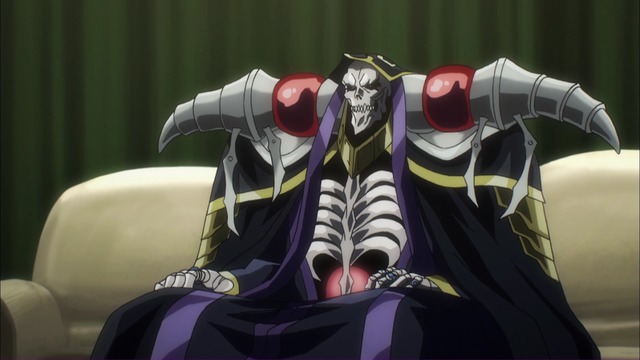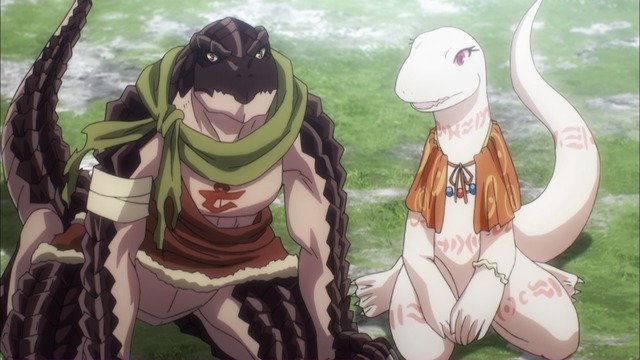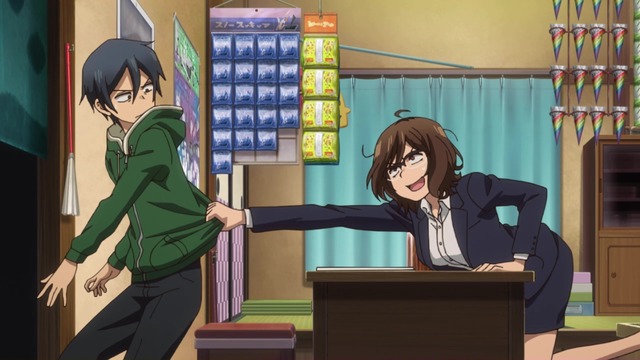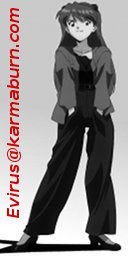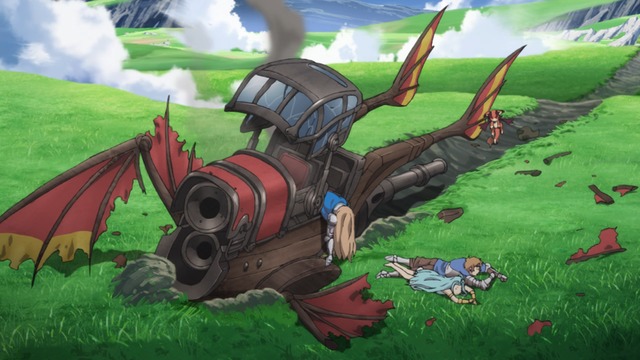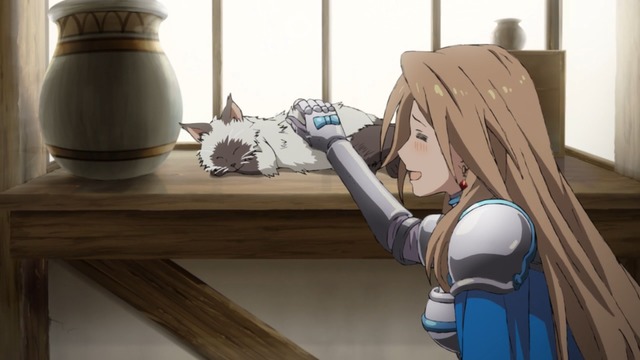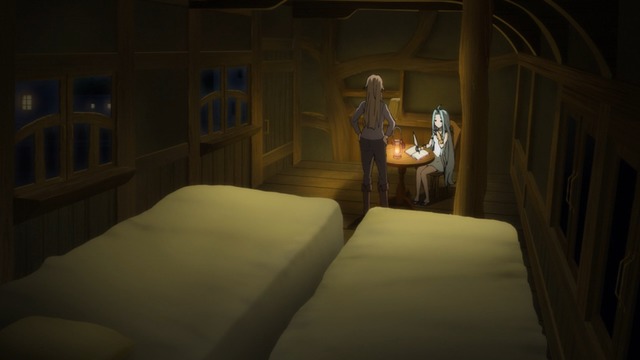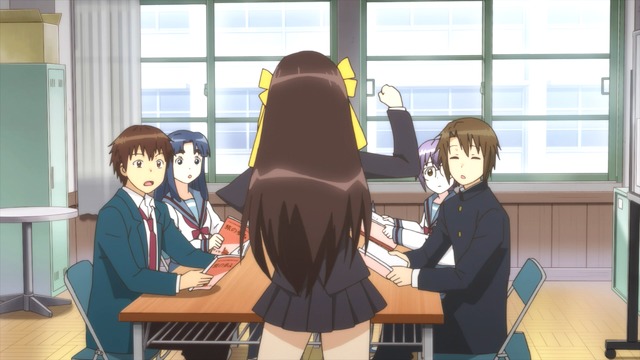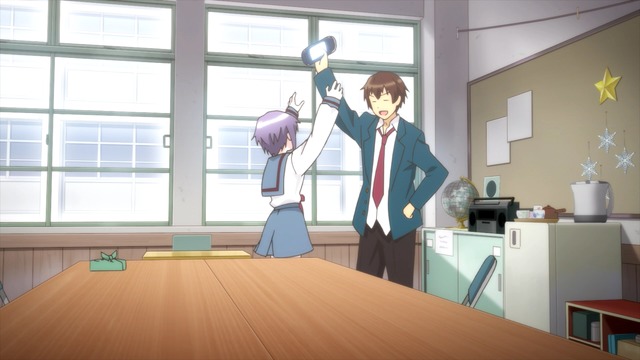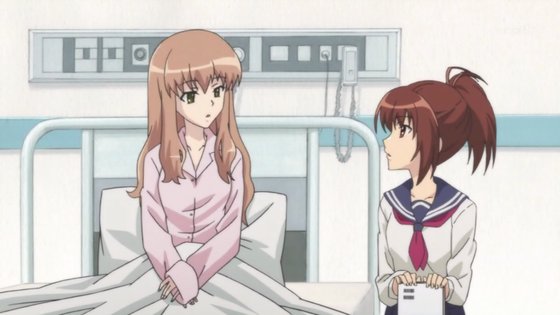
At least Yuki gets to wear pajamas instead of an open-backed hospital gown.
Moshidora received a lot of attention prior to the start of the spring 2011 anime season, probably because it is an anime adaptation of a popular book based on an unusual premise. So just exactly what would happen if a female manager of a high school baseball team read Peter Drucker's Management? Well, apparently she would be better at recruiting members for the team, innovating new tactics, and figuring out what to do with the weenie kid who's a complete liability under pressure because he's a choker.
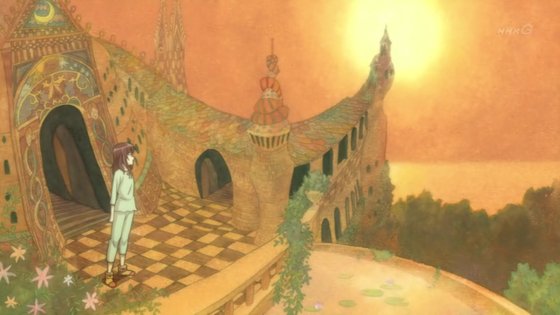
Minami gets to wear pajamas too, even in her hallucination about Innovation.
There are other aspects as well where Minami draws upon Management with almost religious fervor and applies them to her efforts at improving the team on Yuki's behalf—Yuki being Minami's friend and the real manager of the high school baseball team that she is too sickly to manage. (It's never explicitly stated what Yuki's illness actually is, but seeing as how there's no indication she was ever exposed to snow, she's probably not suffering from Key AIDS or Jun Maeda Malaria. My guess is she has leukemia or cancer, although she does maintain her radiant anime-heroine disposition and complexion, so whatever she has doesn't appear too outwardly taxing on her constitution. Also, the weenie kid on the team does not masturbate over her comatose body.
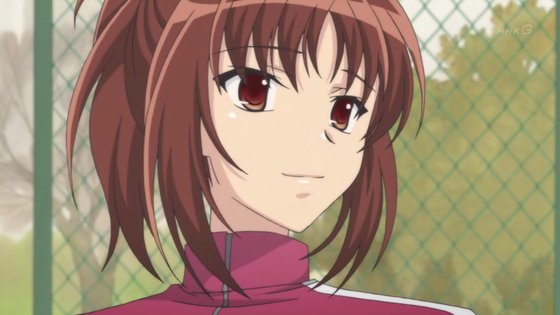
People complained about the animation, but Moshidora does have nice eyes.
After Moshidora aired (it ran 10 weekdays in a row, thus finishing well in advance of other spring 2011 shows), reactions were decidedly mixed. It seems basically anyone who did not have a genuine interest in baseball or business management abandoned Moshidora early. I'm curious what they were expecting, since most of these erstwhile enthusiasts never had any interest in baseball-themed anime in the past. What did they think would be different?

Relax, kid, we do this every day.
Let the record show that Moshidora is a good baseball anime, and a lot more realistic than something like Princess Nine which is good, but not at all authentic. I call Moshidora "realistic" despite the heavy emphasis on an "innovative" tactic the team adopts in response to a Peter Drucker-inspired lesson. The team's [SPOILERS] so-called No Bunt, No Ball strategy, while ridiculous on its face, is grounded in sound baseball principles.
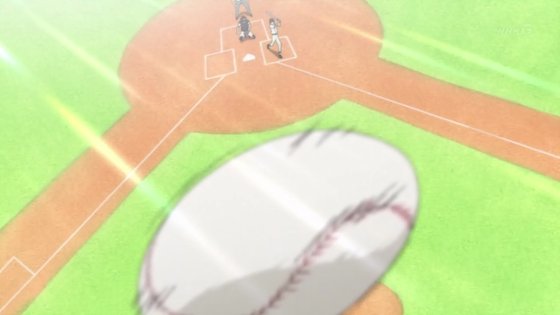
Now batting, number five, Ika Musume Jun Hoshide.
The "no bunt" half of the strategy dictates the team will not sacrifice bunt—ever. This is not necessarily an abandonment of "small ball" entirely, but is a departure from standard Japanese baseball doctrine (at least as depicted in anime): If you have a runner on first with less than two outs, sacrifice him over to second base so he'll be in scoring position for a base hit. Minami's team rejects this strategy entirely, but she may be in good company. Those of you who have read Moneyball or otherwise have a general understanding of sabermetrics will remember Oakland A's general manager Billy Beane despises sacrifice bunts and would never trade an out for a base.
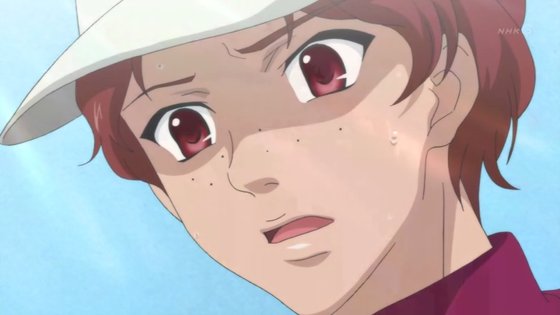
"Letting everyone else do all the work" is dangerous
with a defensive liability in the middle infield.
The "no ball" half of the strategy dictates the team's pitchers will only throw pitches in the strike zone. This part of the strategy is pretty dogmatic, and I have my doubts whether it could realistically be pulled off successfully. However, even this is grounded in sound baseball fundamentals—in this case, a very old fundamental that nobody seems to appreciate anymore: Work fast, throw strikes, and make everybody else do all the work. Those who believe a pitcher should rely on his fastball 75 percent of the time are likely more accepting of the "no ball" strategy, providing Minami's pitchers are able to change speeds, have enough movement on their fastballs, and have enough control to precisely place their pitches' locations, as opposed to basically heaving balls right over the plate (which is what Ryo from Princess Nine essentially does). Valuing control and location is something Big Windup got right, by the way, but I found that show unwatchable because of the ridiculous, relentless crying.
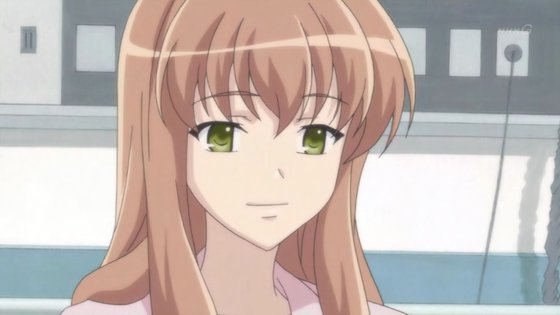
Don't you know it's summer, Yuki? Anime characters
are only allowed to be sick in the winter!
Speaking of which, is there crying in Moshidora? Well, yes, but nearly all of it takes place off the field. You may recall Tom Hanks' insistence in A League of Their Own, "There's no crying in baseball!" This is true, but I can let it go if it occurs outside the lines. In fact, crying is nearly inescapable in a good baseball anime, because—as I've come to realize recently—there is one consistent factor that is present in nearly all good baseball anime and manga. You'll find it in Cross Game, in Touch, in H2 (in basically anything Adachi Mitsuru writes, really), you'll find it A LOT in Major (basically the best baseball anime there is), and you'll even find it in Princess Nine:
Bad things happen to good people.
Baseball is a cruel sport. Despite one's best efforts, defeat and despair often seem unavoidable, and I'm not just talking about Cubs fans. There's a certain sense among players and die-hard fans that the game is rough—that life is unfair—and that stoical dedication to the game through its harshest moments somehow better prepares the baseball enthusiast for the rigors of a demanding world. Perhaps this is why Moshidora could not be an escapist moé blob sanctuary. Certainly it could not have dabbled in that type of otaku-pleasing pandering in its early episodes—even to "grab" casual viewers—and still have had the integrity to execute its final episodes as well as it did. It wouldn't have been proper in a short 10-episode series.
